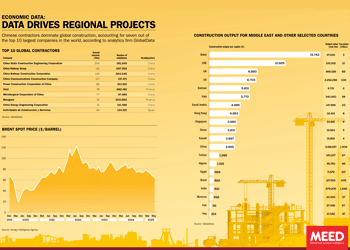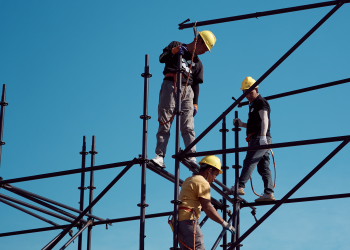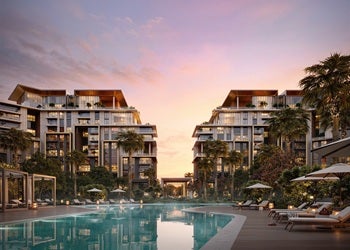Cop28 keeps 1.5°C goal within reach
20 December 2023

The 28th Conference of the Parties of the UN Framework Convention on Climate Change (Cop28), helmed by the UAE’s Sultan al-Jaber, stopped short of recommending the phasing down of fossil fuels, which was on the wish list of half of the countries that ratified the Paris Agreement eight years earlier, and which were present at the 2023 climate summit in Dubai.
However, the conference scored a major victory by referencing, for the first time since Cop started, the need to transition away from fossil fuels to keep the 1.5-degree-Celsius temperature goal alive.
With few exceptions, the Cop28 UAE climate agreement – or the UAE Consensus, as Al-Jaber prefers to call it – has been described by world leaders as historic.
The UN Framework Convention for Climate Change said the agreement signals the “beginning of the end of the fossil fuel era by laying the ground for a swift, just and equitable transition, underpinned by deep emissions cuts and scaled-up finance”.
“We are standing here in an oil country, surrounded by oil countries, and we made the decision saying let’s move away from oil and gas,” Denmark’s Climate & Energy Minister, Dan Jorgensen, said after the final climate text was adopted on 13 December.
Phasing down or out
After campaigning for the final text of the agreement to exclude the phasing down or phasing out of fossil fuels, reports say that Opec member Saudi Arabia appears satisfied with the outcome.
According to a report by Reuters, Saudi Arabia views the agreement as akin to a menu that allows every country to follow its own pathway to the energy transition.
Opec members account for close to 80 per cent of the world’s proven oil reserves, along with about a third of global oil output. Phasing fossil fuels out threatens the members that have not yet diversified their economies away from oil revenues.
As expected, the least-developed countries and islands that are most vulnerable to climate change wanted more from the Cop28 agreement.
“It reflects the very lowest possible ambition that we could accept, rather than what we know, according to the best available science, is necessary to urgently address the climate crisis,” said Senegal’s Climate Minister, Madeleine Diouf.
“The agreement highlights the vast gap between developing-country needs and the finance available, as well as underscoring rapidly dwindling fiscal space due to the debt crisis,” she explained. “Yet it fails to deliver a credible response to this challenge.”
Despite opposing views, various research and studies, including those conducted by the International Panel for Climate Change, confirm that human activities – with burning fossil fuels at the top of that list – contribute to global warming to a huge extent.
Taking the carbon from the environment, or replacing fossil fuels with non-carbon emitting alternatives, are seen as a key solution to keep the ocean levels from rising as icebergs dissolve, or to avoid extreme weather events such as droughts or flooding.
Some experts say that even the 1.5-degree-Celsius target will not entirely rule out the more frequent occurrences of catastrophic events, based on today’s environmental scenario, when the temperature is estimated to be at 1.06 degrees Celsius above pre-industrial levels.
In September, for example, thousands of lives were lost in Derna, Libya, when a storm swept through the region. Experts said Storm Daniel drew energy from extremely warm seawater in the Mediterranean, causing unexpected heavy rainfall that overwhelmed two dams in the area.
Phasing fossil fuels out threatens Opec members that have not yet diversified their economies away from oil revenues
Next steps
Beyond the initial reactions and responses, many agree that the Cop28 text will provide momentum for a global energy transition, and will have a fair impact on hydrocarbons-producing countries in the Gulf.
A Dubai-based consultant focusing on energy projects and investments tells MEED: “It is a step in the right direction, and if the implementation leads to positive gains, it will allow confidence to deepen.
“There is a lot of talk about how it is watered down with regards to fossil fuel use, but we need to give the Middle Eastern countries the time to transition to new revenue sources, otherwise we only bring economic fragility to an already politically fragile region,” the consultant adds. “That is in nobody’s interest.”
The consultant warns against using the text as an excuse to put new money into polluting projects, however. “We need a more robust methodology for new capital commitment to ensure that it goes into clean projects,” she notes.
Karen Young, a senior research scholar at the Centre on Global Energy Policy at Columbia University in the US, agrees. “I think the final language was obviously a concession to oil and gas producers, but also a push to make them more accountable,” she says.
The language implies a shift in demand. “Gulf producers reason that they will be able to meet the tail-end of that demand curve more efficiently and with fewer emissions than their competitors,” adds Young.
“That logic has not changed, and the timeline is, of course, totally dependent on technology, finance and how quickly and in what geographies that demand curve moves.”
Over the short term, the Cop28 agreement is not expected to result in any real change to the Gulf economies, except in terms of domestic infrastructure, where momentum will likely grow for more renewables deployment; more carbon capture, utilisation and storage (CCUS); and new investment in – and export of – liquefied natural gas, ammonia and hydrogen.
There will also be continued competition for market share and market management of oil, according to Young.
Loss and damage
The call to transition away from fossil fuels was not the only accomplishment at Cop28.
The agreement called on the parties to contribute to tripling renewable energy globally and doubling the global annual rate of energy efficiency improvements by 2030, as well as accelerating efforts towards the phase-down of unabated coal power.
It also rallied the parties to reduce methane emissions and accelerate zero- and low-emission technologies, including renewables, nuclear and abatement and removal technologies such as CCUS, particularly in hard-to-abate sectors, as well
as in the production of low-carbon hydrogen.
Equally important, Cop28 managed to secure $89bn in pledges covering climate finance, local climate action and the Loss and Damage Fund.
Lisa Jacobson, president of the US-based Business Council for Sustainable Energy, tells MEED that the agreement on the Loss and Damage Fund early in Cop28 demonstrated a commitment by governments to assist the most vulnerable countries as they cope with the impacts of climate change.
Jacobson, like many others, expects the pledges – which some analysts say equate to only about 0.2 per cent of the necessary funding – to grow in time.
Unlike the funds that focus on climate mitigation and adaptation projects, the Loss and Damage Fund addresses the needs of communities or countries that have already sustained economic losses due to extreme weather events like floods, droughts or wildfires.
“The Loss and Damage Fund operationalisation has been critical … other financing pledges have also been important,” says Jessica Obeid, a partner at New Energy Consult. “Yet the critical factors are the processes [for] eligibility, among others, which remain to be seen, along with moving from pledges to commitments and disbursements.
“In all cases, the commitments still fall short of the required financing for climate change mitigation and adaptation measures.”
The next step for Cop will have to include developing transparent eligibility and allocation criteria and simplified application processes, as well as building domestic capacity, says Obeid. “Leveraging further financing is also key, and may require institutional and technical assistance.”
Cop28 secured $89bn in pledges covering climate finance, local climate action and the Loss and Damage Fund
Coalition of the willing
Despite Cop28’s historic substance and intent, a healthy dose of cynicism remains. “Cop has been around for nearly 30 years, yet emissions have continued to increase year after year,” a UAE-based business leader tells MEED.
From this vantage point, the forging of a coalition of the willing – or several coalitions of the willing – could be the best way to deliver the energy transition without exceeding the 1.5-degree-Celsius temperature goal.
An example of this is the more than 125 countries that have signed on to the pledge to triple renewable energy capacity globally and double the energy efficiency improvement rates by 2030. While such agreements are non-binding, a willing coalition will help encourage others to pursue those pledges.
“That is an example of a coalition having a strong impact and working effectively to elevate the issue they are advocating for, and creating a platform for countries and stakeholders to identify emission reduction and adaptation strategies,” concludes Jacobson.
Exclusive from Meed
-
 June 2025: Data drives regional projects
June 2025: Data drives regional projects30 June 2025
-
 UAE-Turkiye financial links strengthen
UAE-Turkiye financial links strengthen30 June 2025
-

-
 Iraq approves Basra housing project
Iraq approves Basra housing project30 June 2025
-
 Meraas announces Dubai City Walk expansion
Meraas announces Dubai City Walk expansion30 June 2025
All of this is only 1% of what MEED.com has to offer
Subscribe now and unlock all the 153,671 articles on MEED.com
- All the latest news, data, and market intelligence across MENA at your fingerprints
- First-hand updates and inside information on projects, clients and competitors that matter to you
- 20 years' archive of information, data, and news for you to access at your convenience
- Strategize to succeed and minimise risks with timely analysis of current and future market trends

Related Articles
-
 June 2025: Data drives regional projects
June 2025: Data drives regional projects30 June 2025
Click here to download the PDF
Includes: Top 10 Global Contractors | Brent Spot Price | Construction output
To see previous issues of MEED Business Review, please click herehttps://image.digitalinsightresearch.in/uploads/NewsArticle/14171168/main.gif -
 UAE-Turkiye financial links strengthen
UAE-Turkiye financial links strengthen30 June 2025
 This package on UAE-Turkiye relations also includes:
This package on UAE-Turkiye relations also includes:> UAE-Turkiye trade gains momentum
> Turkiye’s Kalyon goes global

Turkish bank DenizBank is one of Turkiye’s leading private banks and, as a wholly owned subsidiary of Emirates NBD since 2019, it is playing a leading role in developing business links between the UAE and Turkiye.
Recep Bastug, who was appointed as DenizBank’s CEO in 2024, says there is great potential for trade between the two countries.
“Turkiye is a growing country,” he says. “We’ve had volatility over the past five years, but the Turkiye economy and the banking sector have been able to manage those periods successfully.”
Having spent years with international institutions such as BBVA, Bastug has vast experience in the banking sector. “Turkish banks, especially private ones like DenizBank, are very successful. In terms of capital, balance sheet structure and digital transformation, we are in a strong position,” he says.
 Solid fundamentals
Solid fundamentalsTurkiye’s fundamentals remain solid with a diversified export-oriented economy, a young and skilled population of 85 million, and relatively low debt levels. “We are not a highly leveraged country. Our household debt-to-GDP ratio is low. With the right policy mix, we offer high potential for foreign investors,” says Bastug.
That potential is increasingly being realised through growing engagement with the GCC and the UAE. “Turkiye’s connection with the Gulf is going up, and DenizBank is set to play a serious role in these relations. Day by day, Turkish companies are expanding their footprint in the region.”
GCC projects
Baştug says that many of these companies approach DenizBank to help facilitate their entry into Gulf markets. “Some of our clients are extremely well capitalised, but others need support for major projects. Just recently, one Turkish company announced a $3bn project in the region. We’re helping them connect with Emirates NBD and navigate the local financial landscape.”
DenizBank is actively supporting the creation of trilateral partnerships – particularly between Turkiye, the UAE and Saudi Arabia. “We see huge opportunity in forming financial strongholds across these markets, leveraging Turkiye’s contractor experience, the UAE’s capital and Saudi Arabia’s scale,” says Baştug.
DenizBank is already delivering results. “With Emirates NBD, we’ve identified 10 strategic cooperation areas, including trade finance, payments and capital markets. Thanks to this partnership, Emirates NBD has become the number one debt capital markets bank in Turkiye, even ahead of global players.”
One area of growing activity is initial public offering (IPO) participation. “We’ve launched a mutual fund that allows Turkish private banking clients to participate in IPOs from the region, including from the UAE and Saudi Arabia. It’s a diversification strategy and helps retain wealth within the group.”
Turkiye’s connection with the Gulf is going up, and DenizBank is set to play a serious role in these relations. Day by day, Turkish companies are expanding their footprint in the region
Recep Bastug, DenizBankInflation ends
Despite the current inflationary environment, Bastug says there is a clear inflection point ahead. “We expect 2027 to be a turning point. Once we exit the inflationary accounting regime [in Turkiye], DenizBank will become one of the biggest contributors to Emirates NBD’s global balance sheet. Last year, we contributed $1.2bn. In 2027, it will be significantly more.”
DenizBank is the fifth-largest private bank in Turkiye with about a 5% market share. “The largest private bank is at 13%. It’s not easy to close that gap – but we will do it. Our long-term goal, aligned with our shareholder, is to become the biggest and most successful private bank in the country.”
The bank is especially focused on agriculture, SMEs, and export financing – sectors that are deeply relevant to
Turkiye’s economic growth and to regional demand. “We are the leading agricultural bank in Turkiye, and we believe strongly in the sector’s future – both for local consumption and exports.”Regional opportunities
Bastug also sees potential for engagement beyond the GCC, including in post-conflict reconstruction. “In the past, Turkiye had strong trade volumes with Syria. Even during wartime, commercial links remained. Once a stable environment emerges, there will be opportunities – especially in infrastructure.”
While a physical branch presence is not currently being considered, DenizBank is prepared to support Turkish contractors operating in neighbouring countries. “We have the relationships and expertise to facilitate this growth. And culturally, we’re well aligned with the region – it helps make business smoother.”
As Turkiye re-establishes economic momentum and Gulf economies look to deliver on long-term visions, DenizBank is positioning itself for a more active role in the region in the future. “We are preparing the bank for the next stage, and with the backing of Emirates NBD, we’re confident in our ability to lead.”
READ MORE
> UAE-Turkiye trade gains momentum
> Turkiye’s Kalyon goes globalhttps://image.digitalinsightresearch.in/uploads/NewsArticle/14170372/main.gif -
 Multiply agrees to sell Pal Cooling to Tabreed and CVC
Multiply agrees to sell Pal Cooling to Tabreed and CVC30 June 2025
Abu Dhabi-based investment company Multiply Group has agreed to sell all of its shares in its district cooling subsidiary Pal Cooling Holding (PCH) for AED3.8bn ($1bn) to a consortium comprising Engie-backed National Central Cooling Company (Tabreed) and CVC DIF.
The transaction is still subject to regulatory approvals.
MEED exclusively reported in May that a team comprising Tabreed and CVC was holding exclusive discussions to acquire PCH.
Multiply Group initially acquired a 100% stake in PCH and its subsidiaries in July 2021.
Multiply Group has been advised by Standard Chartered and Clifford Chance. Tabreed and CVC DIF have been advised by Citi, Synergy Consulting and White & Case.
The transaction brings together two of the UAE’s leading district cooling players. PCH was founded in 2006 and operates five active district cooling plants across the UAE. The company maintains eight long-term concessions and strategic partnerships with some of the UAE’s leading real estate developers, servicing key residential, commercial and mixed-use developments – most notably on Abu Dhabi’s Reem Island.
Tabreed owns and operates 92 plants, including 76 in the UAE, five in Saudi Arabia, eight in Oman, one in Bahrain, one in India and one in Egypt, in addition to other international projects and operations.
https://image.digitalinsightresearch.in/uploads/NewsArticle/14170511/main.jpg -
 Iraq approves Basra housing project
Iraq approves Basra housing project30 June 2025
Iraq has approved plans to build a housing project in Basra that will offer about 5,000 homes in the first phase to tackle the country’s rising housing shortage.
The project, which is endorsed by Iraq’s National Investment Commission (NIC), will cover an area of about 3 square kilometres.
According to local media reports, Basra province governor Asaad Al-Idani said the project has already been awarded to a developer.
Iraq has been gradually recovering since the war. The government initially prioritised infrastructure and public housing to stimulate economic growth, improve living standards and attract foreign investment.
More recently, benefitting from higher oil prices and a period of relatively stable governance, Baghdad has expanded its focus to reconstructing and modernising the country’s deteriorating infrastructure.
The Iraqi construction market has also seen significant investments from private real estate developers from the region. In May, Egyptian real estate developer Ora Developers announced that it had started construction on the Al-Wardi residential city project, which consists of more than 100,000 residential units covering about 61 million square metres (sq m) on the southeastern side of Baghdad.
The move is the latest sign of international investors’ growing appetite for developing real estate in Iraq as part of the country’s post-war building initiatives.
Also in May, another Egyptian firm, Talaat Moustafa Group Holding, said it was in negotiations with the NIC to develop a mixed-use project. The project, which will cover an area of about 14 million sq m and will be located in the southwest of Baghdad, is expected to contain about 45,000 residential units.
The positive sentiment has been particularly buoyed by a robust 2024 budget, which allocated nearly $42bn to transport, social infrastructure and housing initiatives.
Looking ahead, Iraq’s construction industry is expected to register an annual average growth rate of 4.9% in 2025-28, supported by further investments in energy, infrastructure and housing projects, according to UK analytics firm GlobalData.
MEED’s June 2025 report on Iraq includes:
> COMMENT: Iraq maintains its pace, for now
> GOVERNMENT & ECONOMY: Iraq’s economy faces brewing storm
> OIL & GAS: Iraqi energy project value hits decade-high level
> PIPELINES: Revival of Syrian oil export route could benefit Iraq
> POWER: Iraq power sector turns a page
> CONSTRUCTION: Iraq pours billions into housing and infrastructure projects
> DATABANK: Iraq forecast dips on lower oil priceshttps://image.digitalinsightresearch.in/uploads/NewsArticle/14170011/main.png -
 Meraas announces Dubai City Walk expansion
Meraas announces Dubai City Walk expansion30 June 2025
Register for MEED’s 14-day trial access
Local real estate developer Meraas has announced the City Walk Crestlane project as it continues to expand its City Walk residential community in the Al-Wasl area of Dubai.
The City Walk Crestlane comprises two residential towers offering 198 one-, two-, three-, four- and five-bedroom units.
The project is expected to be completed and handed over by the third quarter of 2028.
Earlier this month, Meraas, which is part of Dubai Holding Real Estate, awarded a construction contract for another project at City Walk.
The local firm Naresco Contracting was awarded a AED450m ($123m) contract for the main construction works on its Central Park Plaza residential project at City Walk.
The project involves constructing two towers with 23 and 20 floors. Together, they will have 212 residential units.
In May, Meraas awarded another local firm, Al-Sahel Contracting Company, a AED300m contract for the main construction works on Elara, which is phase seven of the Madinat Jumeirah Living masterplan in Dubai.
The project involves building three residential towers with 234 apartments.
https://image.digitalinsightresearch.in/uploads/NewsArticle/14169472/main.jpg

